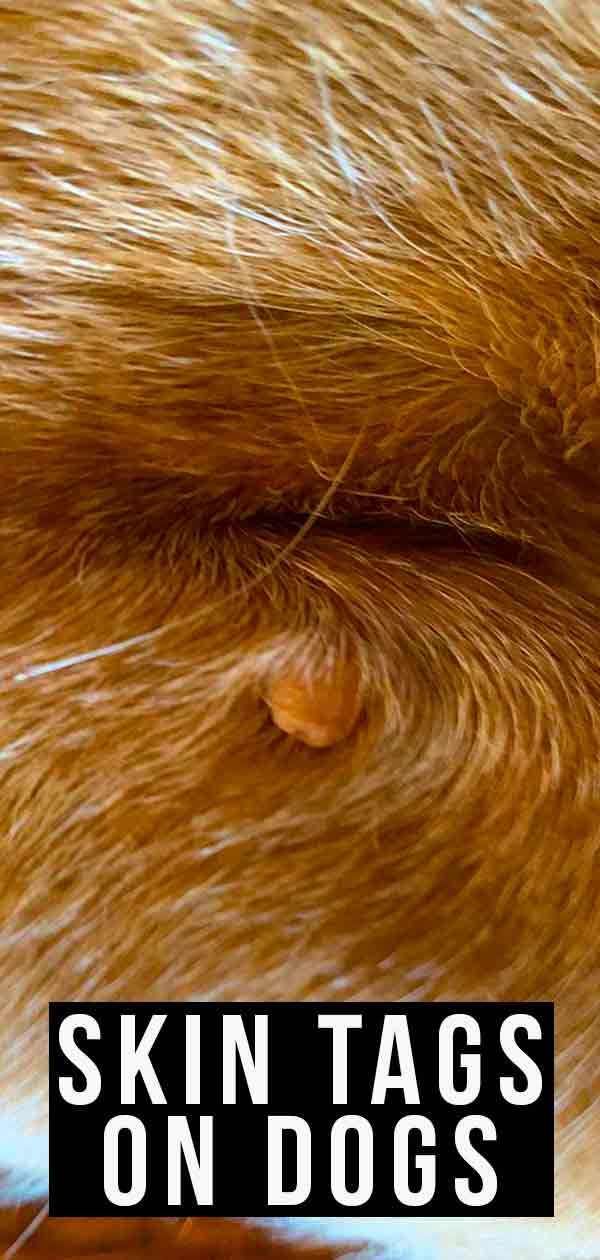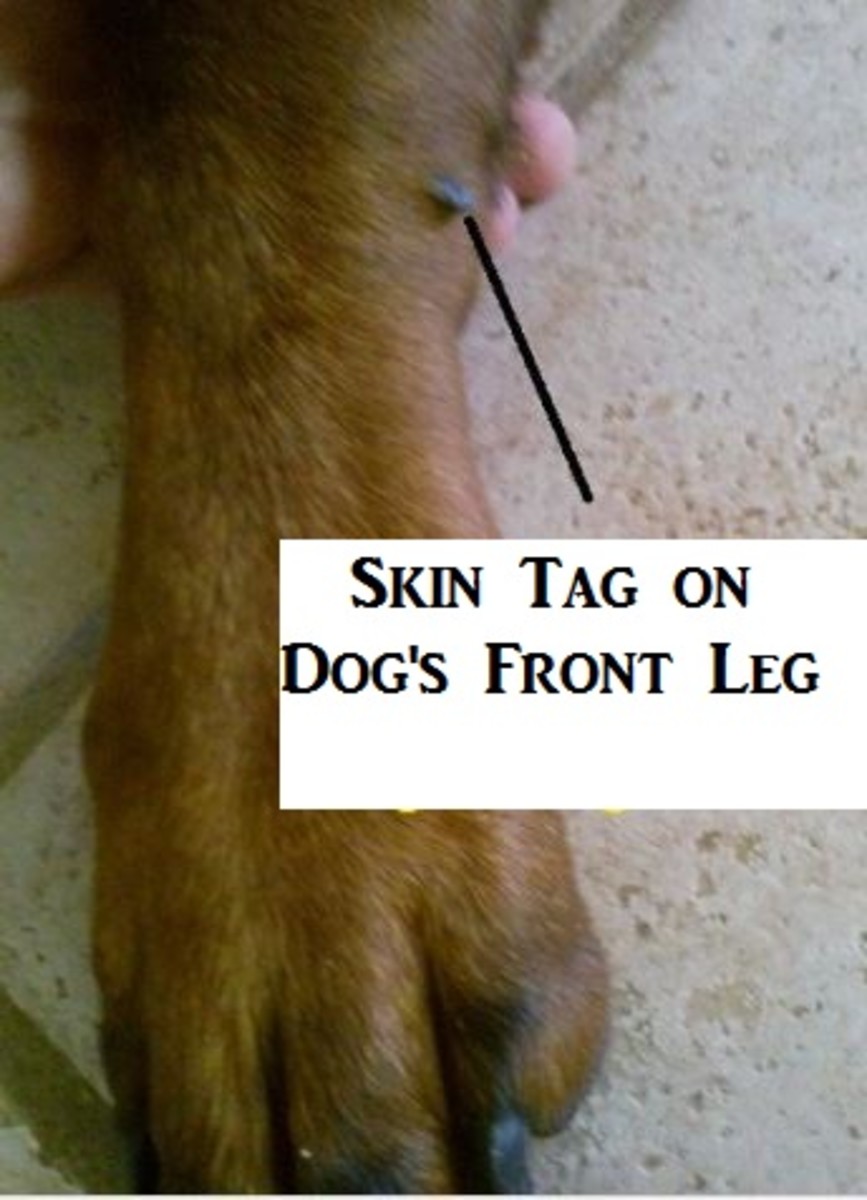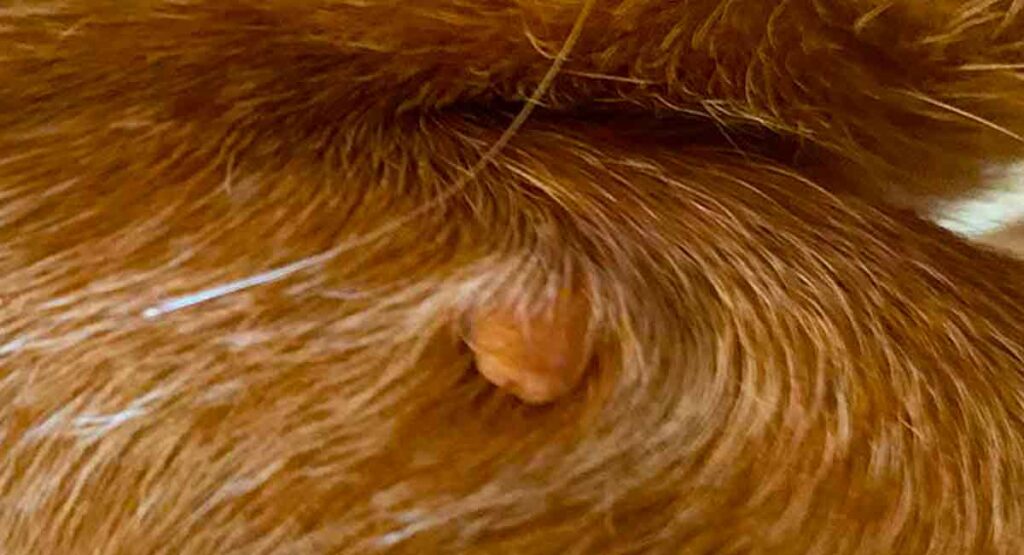
Skin Tags On Dogs A Guide to Dog Skin Tag Removal and Identification (2023)
Veterinary professionals don't know exactly why skin tags on dogs occur. They often appear on areas of your dog's body where skin rubs against skin, so some believe that friction plays a role in their development. Parasites, lackluster skin care, skin irritation, or over-grooming may also play a role.

What Can Cause Skin Tags On Dogs
Skin tags on dogs are benign, small growths in the skin where extra cells build up in the top skin layers. You usually find them in older dogs from medium and large breeds. Many types of canine skin tumors are similar to skin tags, so if you suspect a skin tag, always take your dog to the vet to be sure.
Your Guide to Skin Tags On Dogs Symptoms, Causes & Treatment PawSafe
Skin tags in dogs are a type of growth comprised of fibrous tissue that can appear as a lump or bump. This connective tissue is made up of collagen proteins, and is essential in the formation of such specialized tissues as bone and cartilage, as well as providing the connective support for the various organs and systems in the body.

Skin tags by mouth Maltese Dogs Forum Spoiled Maltese Forums
Skin tags are benign (non-cancerous) growths of fleshy tissue that appear as small lumps or bumps. They occur more often in middle-aged and senior dogs. And they seem to be more prevalent in larger breeds and certain breeds, like Cocker Spaniels and Boxers.

Skin Tags on Dogs Pictures and Removal Cost Skin Care Geeks
Skin tags in dogs are benign masses arising from a small area of skin. They usually have a stalk and can be quite long. These abnormal skin growths may vary in their appearance and number The affected skin may look identical to the surrounding tissue, or may be darker or have a warty surface Very little is known about what causes skin tags

How To Safely Remove A Skin Tag From A Dog HOWOTREMVO
Here are some of the types of skin growths that occur in dogs. 1. Sebaceous cysts are a common and benign skin growth. These cysts develop in the skin as the result of blockage of a sebaceous gland, usually near a hair follicle. These may erupt and discharge a thick, whitish or grayish material. If a cyst has opened up, you should clean the.

10 Most Widespread Canine Pores and skin Issues with Photos RUBOLD
Dr. Fiona Lee There are some visible signs that can help you identify what kind of growth your pup's dealing with. Skin tag or tick According to Dr. Lee, "A tick will have mouthparts and six to eight legs (depending on the stage)." You'll have to push your dog's hair away from the area and look super closely, since ticks are tiny.

What are Skin Tags on a Dog? Dog Discoveries
A skin tag is a benign growth that develops on the surface of your dog's skin. They vary in appearance with a range of different sizes, shapes and colors (From pink to black). In this article, we will review over 10 pictures of skin tags, as well as pictures of other types of dog lumps that can be easily mistaken for skin tags.

My dog has what looks like a skin tag on her chest. It used to be a small bump that looked like
What Are Skin Tags on Dogs? Skin tags are small abnormal growths of skin. As the name suggests, they are skin that has grown differently than normal skin and are usually located on the chest, legs, and neck. Skin tags are not considered an emergency, but having your veterinarian examine them on their next annual visit is always recommended.

How To Remove Skin Tag From Dog's Lip HOWOTREMVO
Skin tags are abnormal but benign growths that develop on your canine's skin. They can appear anywhere, but you might expect to see them on the neck, chest, face (including eyelids) and legs. Also known as fibrovascular papillomas, skin tags range in appearance and texture. They can feel firm or soft as well as squishy or hard.

Dog Skin Tag Here’s How To Tell It Apart From Other Skin Issues DodoWell The Dodo
Skin tags are small, benign growths that can appear on any dog of any breed, gender, and age. Some breeds are more susceptible to skin tags, and certain environmental factors can also.

Skin Tags On Dogs A Guide to Dog Skin Tag Removal and Identification
Skin tags are benign growths that can appear anywhere on the skin of a dog. They are most frequently noticed on the trunk, the face, the sternum, front armpits and other bony pointy parts, such as the elbows, hips or ankles. They may also grow on eyelids and around the mouth. Skin tags are also known as fibrovascular papillomas.

Skin Tags in Dogs Symptoms, Causes, Diagnosis, Treatment, Recovery, Management, Cost
Skin tags, which are also called fibrovascular polyps, fibrovascular papillomas, acrochordons and soft fibromas, are a type of benign (i.e. noncancerous) skin growth, says Theresa Entriken, DVM, a veterinary consultant based in Leawood, Kan. "They're small (usually 1 centimeter or less in length), soft, flesh-colored growths on the skin or that.

Skin Tags On Dogs A Guide to Dog Skin Tag Removal and Identification HiQuality
A dog skin tag is a fleshy skin growth that can develop anywhere on a dog's body. It's typically the same color as your dog's skin but may have a slightly different texture. Most skin tags are composed of collagen and blood vessels covered with skin. Some skin tags start small and grow larger over time while others remain unchanged.
Your Guide to Skin Tags On Dogs Symptoms, Causes & Treatment PawSafe
Ticks can look like warts or skin tags - except that you will be able to see their 6-8 legs spreading on each side as shown in the picture below. Just like skin tags, ticks are often dangling from your dog's skin (attached by their heads): They vary in shape, color and size. Below is a small black tick: A larger brown tick on a dog (with.

How to Remove Skin Tags from your Dog YouTube
Overview Severity: i Low Just like humans, dogs can develop skin tags as a normal part of the aging process. Dog skin tags can take on a variety of appearances and can range from small to large. Suspected skin tags should be evaluated by a veterinarian to rule out more serious concerns.